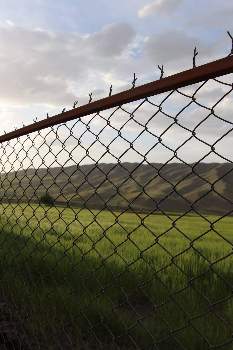
Fences and boundaries can be notoriously difficult to negotiate. Think leylandii.
Gary and Kerry Hambling from Suffolk believed they had a pretty good case when their neighbours built a 6-foot fence preventing direct access from their cottage to their field. The judge thought otherwise, and after a 6-year dispute, Judge Sir Anthony Mann ruled in the fence-owner’s favour and gave the Hamblings a hefty court bill of £160,000.
So what went wrong? Well, as ever, it’s all in the small print. The legal row centred on the wording of the right of way. It gave ‘access to the field’. It didn’t give access to the cottage, so the fence remains, access continues to be restricted and the huge court bill has to be paid.
And the moral of the story?
1. Try to have consideration for your neighbours. The fence was built in response to the Hambling’s decision to turn their field into a carpark for trucks and vans. Be nice to your neighbours or they might retaliate!
2. When buying your property, fully understand the rights of way and boundaries attached to your property and your neighbouring properties. When buying a property, you will have instructed a solicitor. Make sure they know their stuff and can clarify all these matters fully.
3. Talk! Talk to your neighbours and try and resolve your issues. It can be easy to get hot under the collar about what your neighbours are doing – simply talking to your neighbours can diffuse the situation, and compromises found.
4. Try mediation. Mediation UK can direct you to impartial and independent people who can help both parties understand each other’s perspectives.
And if that really doesn’t work, get legal advice from experts in property law, who are excellent at reading the small print and interpreting legislation and case law. It goes without saying that AWB Charlesworth have a good track record on these kinds of matters.
For more information about property disputes, please contact Janine Eaglesfield on 01756 692861 or email janine.eaglesfield@awbclaw.co.uk.

8 March 2023
Further Reading:

